#there were same-sex kisses in movies in 1922 then 1925 then 1927
Note
Your au takes place in the 1920’s. I know your au has rarijack, are there any issues because of them being lesbians or is that not really a problem (the general existence of cadence may have caused people to be more accepting sooner idk)
Not really a problem. This AU's supposed to be fun, it wouldn't be fun having to write 90% of characters and settings as vehemently and violently anti-gay. At the very least, bigotry still exists, but social progress is more similar to the 2010s, where queerness is more normalized.
#but also don't forget that the 1920s was extremely queer#especially in europe and france#so if you're gonna @ me about historical revisionism remember this era was very gay#there were same-sex kisses in movies in 1922 then 1925 then 1927#one of the most popular songs in the 1920s was called “masculine women! feminine men!”#chalk it up to magic existing ig everyone's just more chill#ask me#tana-draws#but yeah it wouldn't be fun to have to navigate rarity and aj's relationship and also have everyone in the town hating them and#trying to keep them seperate under god's watchful eye lest they're condemned to burn in hell forever as sinners
226 notes
·
View notes
Text
The real Clara Bow.
"(I'm) just a woikin goil"
Source: Clara Bow
And a working girl she was. During her rise to fame and eventual stardom Clara Bow, one of the most popular and talented actresses the screen has ever produced and the ultimate ideal of the 20s flapper, was the most overworked and underpaid star then in Hollywood. Producer B.P. Schulberg had her under personal contract and steered Clara's career becoming his greatest meal ticket. But fame hadn't come easy to this Brooklyn bombshell.
Clara was born into the world on July 29,1905.And her childhood was nothing but unsettled. Her home life was a shambles as her father was an alcoholic, abusive and a womanizer. Her mother had come from a similar background and was given to regular mental "bouts". As a result Clara became quite sensitive and shy and developed a slight speech impediment. When she was old enough the streets more often than not were her home away from home when her father or mother proved too much. She became quite the tomboy but a tomboy who frequented the movies any chance she could get. She would do anything she could to earn money to help pay for her movie habit and to help her father with keeping the household together, as her mother was not able to work steadily for any length of time. Her favourite movie actress was Mary Pickford and she would stand in front of a mirror emulating her.
In January 1921 Motion Picture Magazine sponsored a "Fame and Fortune" contest. Clara saw the ads and badly wanted to give it a try. At that moment she didn't have enough money for the two photos that she would need for the contest entry so she sheepishly approached her father. Unexpectedly her father not only agreed but accompanied her personally to the photographer's studio and paid the $1.00 for the shoot. A few days later she attended the offices in New York of Motion Picture Magazine and was crestfallen when she entered to find it crammed with many lovely looking girls, all there for the same reason. Looking at some of the beautifully dressed wanna be's, she figured she didn't have a chance but she had come too far to give up so she persevered through the obligatory interview with the magazine staff and returned home to await the decision.
A month or so later Clara was given the astounding news that it was she out of all the others, that had been picked as the magazine's winner;she was floored. Soon after she was given a small part in a movie called "Beyond The Rainbow". The part was so small that it was excised from the original release prints but later when Clara's star had risen to such phenomenal heights they reinserted it and re-released it. One night after work had been completed on the film Clara awoke to find her mother standing over her holding a butcher knife. Her father and Clara had been trying to keep anything about her film ambitions quiet, but her mother had gotten wind of it and this night was threatening to use the knife. Clara as calmly as she could talked her mother into surrendering the knife to her. Clara prayed that there would be no such other instances but shortly after the film's release her mother attacked Clara once more. She chased Clara around and around the room screaming that no daughter of hers was going to go into such a questionable and perverted occupation. Clara retreated to the streets sobbing and it took her father some time to calm her mother down. After the dust had settled her father quietly made inquiries and eventually had his wife put into an asylum. And it was there her mother passed away just a few months later in early 1924.
Clara was now under personal contract with Hollywood producer B.P. Schulberg who had seen her work in "Down to the Sea in Ships ", her other 1922 effort. She would complete three movies in 1923 and moved on into 1924 doing an astounding eight pictures.1924 would prove to be a watershed year for her. She was picked as one of the W.A.M.P.A.S. (Western Associated Motion Picture Advertising Society) girls and the only one of the group that actually went on to better things. Then Schulberg moved on to Paramount studios taking his young protege with him. And Clara was getting much needed attention from critics and business insiders alike. Her star was definitely on the rise.
Clara's schedule was even more hectic in 1925 for it saw no less than 14 films released!.1926 saw Clara do eight films among them "Mantrap " with Ernest Torrance which really made Clara a star and "Kid Boots" starring a well known vaudevillian making his screen debut, Eddie Cantor. "Kiss me Again" was significant in that it showed off Clara's range as an actress in a more serious role. She garnered great reviews for her part but this was one of the very few serious roles she would get in her career. Directors Victor Fleming and Paul Bern stated on several occasions that Clara could be one of the greatest dramatic actresses of her time It is so unfortunate Hollywood didn't have the foresight and guts to stick her in other than formulaic roles featuring her as a "modern" girl, a flapper and emphasizing her sexuality. They realized they could stick Clara in any kind of picture no matter how bad the script and because of her sheer presence and forcefulness she would carry the day. And as long as his meal ticket was making money B.P. Schulberg was quite happy to keep the status quo.
But it was a visit on a set by British author and sex maven Elinor Glyn that kicked Clara's career up another big notch. She had written several novels on relationships between couples that were very daring for their day. Elinor watched Clara work and declared that she had "It". An energy or sexually charged charisma and magnetism that affected everything and everyone around her. And it was this "It" that made her glow on the screen .And there is no doubt Clara lit up the screen. And 1927 was to showcase Clara at her finest. She starred in about seven vehicles that year but two are standouts. The first is "It" and it did indeed capitalize on Clara's "personality" but it also featured a walk on by Elinor Glyn herself to give the movie it's obvious tie in. It was about a department store clerk who falls in love with the young owner of the store that she works in. It had all the typical mix ups, tears and laughter associated with that type of movie but it showed Clara off to great advantage and the film still stands up extremely well today.
The second film was "Wings" and was set during the First World War and it co-starred Richard Arlen and Buddy Rogers as two fliers who see action overseas. Clara who always had a crush on Buddy meets up with him in France while driving an ambulance there. There was quite a few touching scenes throughout the movie involving Clara. In fact the movie has quite a serious feel to it throughout especially through it's realistic depictions of aerial combat in the war and its consequences. But when Clara is on screen the movie literally comes alive. It is a testament to her ability as an actress that she could do that repeatedly, picture after picture. And it's in no small way that she helped the film win the first Academy Award for best picture that year.
1927 went into 1928 and her film output continued unabated as did her career. She starred in four pictures that year; "Red Hair" and "The Fleet's In " being standouts. But 1929 would prove to be an unnerving one for many actresses and actors and Clara Bow unfortunately was one of them.
Clara was at the top of her game. She was often seen driving around Hollywood in a flame red car (a Kissel or Stutz-Bearcat depending on the story) with one or more of her auburn coloured Chow dogs. She was known quite well in the neighbourhood by the local constabulary who would frequently drop in at the rear entrance to her home to have a cup of coffee and sandwiches and have a chat. Clara was frequently linked with many men over the years and was a constant source of gossip for the papers to engorge. One incident was a touch football game she played on her front lawn with the University of Southern California Football team. Everyone had such a great time that she invited them over again. This incident got turned inside out until one read that Clara had slept with every member of the USC football team! Another incident that didn't help Clara's reputation at all involved Clara attending a gambling establishment in Lake Tahoe. It was reported she had welshed on a gambling debt while playing there. She had gotten into an argument with staff personnel and refused at first to pay but it she eventually settled. But not before the incident had leaked out and done some damage publicly.
Clara was a very trusting and unassuming individual and often wore her heart on her sleeve. She was in reality a very insecure person and she many times publicly decried that her past home life had left many a scar on her emotionally. And she also stated that mentally she could just not shut down and was always worrying about something and had insomnia.In point of fact Clara had become overworked and overwrought. What happened in 1929 sent Clara hurtling precariously towards the edge.
The movie industry had been experimenting with sound pictures from the early 1920s.But it was Jolson's "The Jazz Singer" in 1927 (little dialogue but with musical numbers) and the first full talking movie in 1928 "Lights of New York", that broke the dam wide open and there was no turning back. But the big question was how everyone was going to sound, literally. Many actor's didn't have the vocal capability of transitioning from silence into sound and as a result found themselves leaving the business. In those days sound was monitored from a booth, and especially in the early days the microphone was static and immovable. Actor's would have to know where the mike was and dutifully stand within its' range to be recorded properly. The camera's were put into sound proof boxes where the camera's whirring would not be picked up by the mike. Consider this December 1929 Photoplay article excerpt:
"Terrible Mike has cooled down the incandescent flapper-he's giving her an awful kick, and is putting Poor Old lady Has-Been on the Throne"
It was a stifling environment in which to work and for Clara this was definitely another pressure which she did not need.
The making of "Wild Party", her first talking picture, was anything but smooth. Clara was overwrought with the added pressure of having to know where and when to stand and was now having to pay attention to her annunciation as well as her voice level. In fact it has been reported that in her run through for her very first scene as she comes in and says:" Hello Everybody" all the sound valves in the sound booth exploded! Clara would more than once become so upset she would run off the set crying. But the movie was made and Clara showed she had not lost "It" and it garnered great reviews. Clara's voice came over very well and was able to rise well above the primitive recording techniques of the day.
But Clara's career was slowly grinding to an inevitable end and "Mike" was the least of her worries.
Clara would make between 1929 and 1933 10 more pictures and all quite successful. Her last two "Call Her Savage" and "Hoopla" were especially good vehicles for her and showed off her acting ability to its best. But strangely they weren't successful at the box office.
In January of 1931 Clara was involved in a very public trial in regards to her former personal secretary Daisy Devoe who it was claimed had mishandled Clara's funds. While Clara did not want to press charges the police saw fit to carry it through the court system anyways and many personal details of Clara's life came out during the trial. Clara was forced to testify but was in tears much of the time. When the verdict came down about a month later Devoe was sentenced to 18 months in jail. It was plain that Clara, as usual, had been much too trusting with her employee and when asked about the trial, being the person she was ,she could not kick Devoe even when she was down, it wasn't her nature:
"The trouble with me is, I'm no sneak....I may have made mistakes...But my greatest mistake seems to have been that I was open and above board with everything".
On December 4,1931 Clara married cowboy actor Rex Bell who she had been dating steadily for the last two years. They bought a ranch in Nevada and Clara would retire there permanently. But Clara was her mother's daughter and some of the same type of inflictions that harried her mother would eventually also do the same to Clara. The pressure of the last few years with sound, her personal life being spread more and more across headlines much of it exaggerated or totally untrue and her realization, albeit late, of her true worth and what the pittance was she actually received, in the end proved too much for the fragile Clara to cope with.
Clara would spend much of her retirement years in and out of sanitariums and on drugs of one type or another to control her condition. She would always remain an insomniac and stated that the nights would always be the hardest.
Clara had two sons one in 1935 and the other in 1938.Rex eventually gave up movies for a life in politics and by 1954 was the lieutenant governor of Nevada. In July of 1962 Rex died of a heart attack and Clara went all the way to Glendale, California to attend the funeral . Afterwards she retired back to the ranch and seclusion once more.
To pass the time away in her final years she would often send letters off to stars that she admired and even answered fan mail that came to her. She would spend her days swimming and reading while at night television was her favourite pass time. . On September 27,1965 while watching the " Late, Late Show" she passed away quietly in her chair.
In the late 1960s when film historian Kevin Brownlow wrote his fine work: " The Parade's Gone By" about silent films and their stars he completely overlooked Clara Bow and her works. Louise Brooks, a contemporary of Clara's, wrote to Mr.Brownlow the following:
"You brush off Clara Bow for some old nothing like Brooks. The more I think about it the madder I get .Clara made three pictures which will never be surpassed, 'Dancing Mothers', 'Mantrap', and 'It' "
And Louise Brooks was right. Clara has been largely forgotten and overlooked as time has passed by many critics and historians. And this is a travesty.For to watch Clara Bow today is to see a human dynamo, a force onto her own who literally brings the screen to life with her presence alone. But there was more to her than just "It" and she could act alongside the best of her day and in many instances surpass them at their own game. This was a star of the highest order. She defined an entire generation and she still touches us as equally today as she did over 70 years ago. She was an original. She was....Clara Bow.
1 note
·
View note
Photo
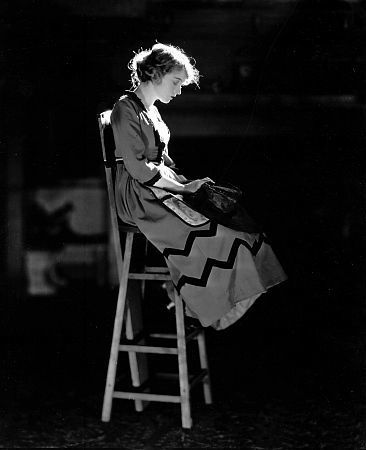
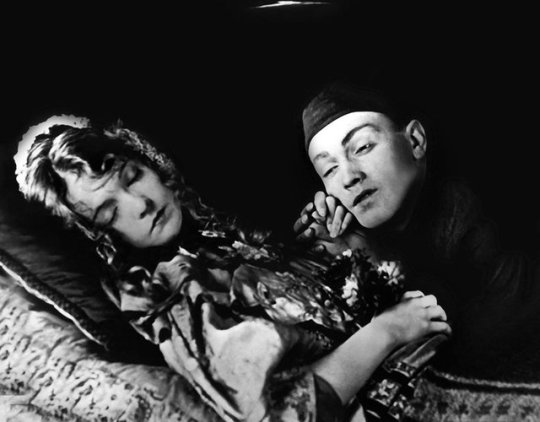

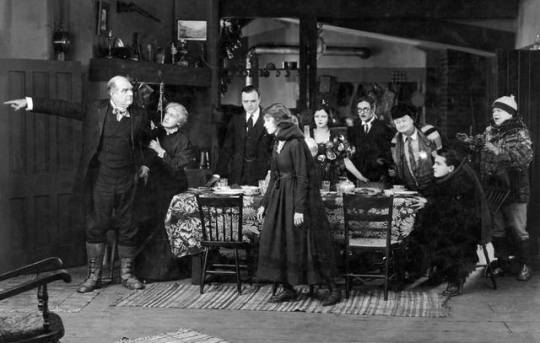
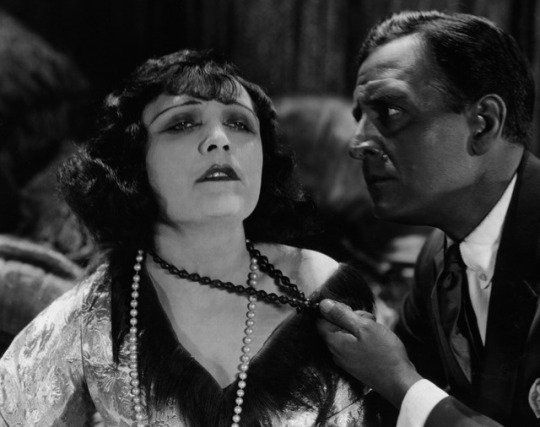
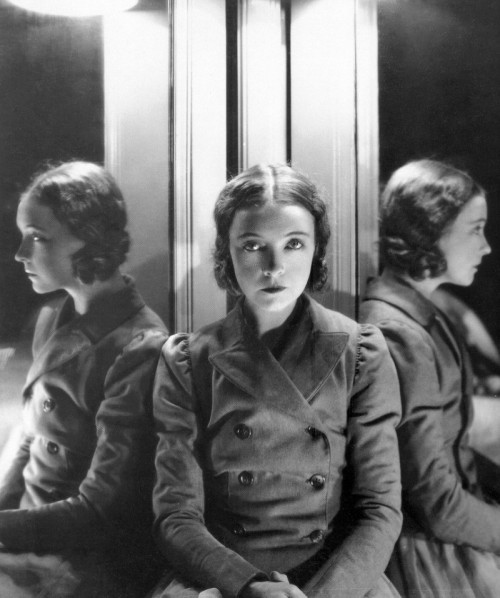

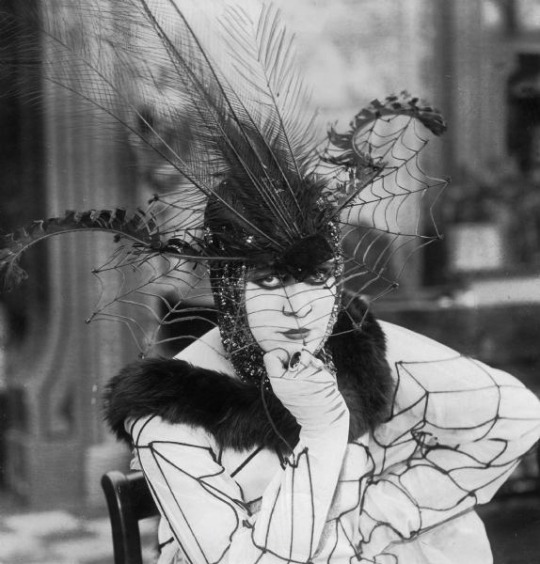
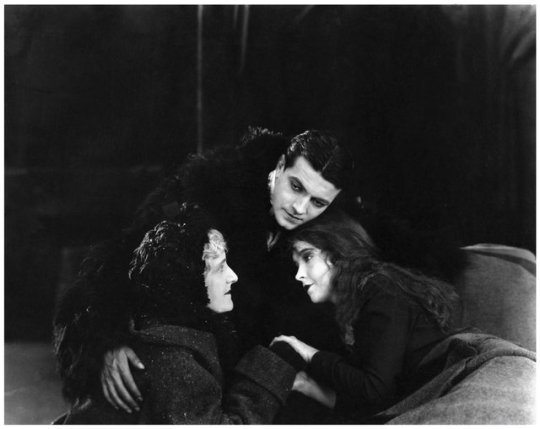

Silence
A Silent-Screen Overview: Part 2.
Completing this journey across the period when the images were strong and meaningful enough to leave no space for the need of auditory input, the overview will start from 1916 and will continue up to 1929, although the last pieces that are mentioned regard 1936. Following the highlights of the years mentioned and gradually observing the replacement of the purity in emotion with the exaggeration in its portrayal, the swan song of the cinematographic naivety will be discreetly mentioned as well.
1916: D.W. Griffith’s second large scale production after “the Birth of a Nation”, is “Intolerance” with the out-of-space Lillian Gish and the rare persona of Douglas Fairbanks, which undoubtedly made 1916 an essential cinematographic year. What contributed to this, is the ongoing success of Mary Pickford, whose pictures were even distributed by the Artcraft Picture Corporation. Moreover, it is now that Charles Chaplin is considered the highest priced film star in the industry, after having signed with the Mutual Film Corporation. “Sherlock Holmes” with William Gillette is signed by Essanay this year, Norma Talmadge stars in “Going Straight” and Triangle releases the Fine art production of the Shakespearean “Macbeth”.
1917: Important contributions to the history of the silent screen were made in 1917, including the first all-colour feature film “A Tale of Two Nations” and the Williamson Brothers’ “The Submarine Eye” due to its underwater scenes. The charismatic director and storyteller Herbert Brenon made his exceptional “The Fall of the Romanoffs” this year and the Mack Sennett “Keystone Comedies” were released, including the “Bathing Beauties” as a means to cheer up the World War soldiers. Despite the cinematographic quality of the following films, what is also a contribution of this year, is the alluring costume creation, all evident on Theda Bara, throughout all her performances, as for instance in “Cleopatra”, “Camille”, “Du Barry”, “Cigarette”, as well as on Valeska Surratt and Virginia Pearson. Although the serial days were almost over, the “Seven Deadly Sins”, “Patria” with the astonishing Irene Castle and the “Mystery Ship” were created this year.
1918-1919: The war was gradually having greater influence on the film production. 1918 may be called the year of Propaganda, which is obvious through “Lafayette, We Come”, “To Hell with the Kaiser”, “The Beast of Berlin”, even Griffith’s “Hearts of the World”. What basically relates these two years when it comes to the practical matters of film production, is the combination of firstly the downturn that important colosseums of production were taking (like Vitagraph and Pathe) and secondly, the meaningful handling of Adolph Zukor. Zukor, whose philosophy was that important actors should reinforce through their fame the success of the film, did his best to keep in the game the corporations he participated into. During that, important movies were released like “Les Miserables” with William Farnum, “The Danger Game”, “Captain Kidd Junior”, “The Sheriff’s Son”. Moreover, essential Griffith creations were “The Girl Who Stayed at Home” and the unforgettable “Broken Blossoms” where Lillian Gish, an abused by her father daughter, is taken care by a Chinese immigrant, (the unbelievably expressive and eloquent Richard Barthelmess) something which ended up having even worse social effects on her. Many actors were given contracts from the newly established corporations, among them was the talented Nazimova (who stars in “The Red Latern”, “Out of the Fog” and “The Brat” this year), Gloria Swanson (staring in “For Better for Worse”, “Male and Female”) who were to considerably affect the world scenes.
1920-1921: The United Artists Corporation was now created, by the four most important names in the pictures: Mary Pickford, Douglas Fairbanks, D.W. Griffith and Charles Chaplin. Another highlight of the year, was the random discovery of Jackie Coogan by Chaplin, who played “The Kid” and became a star immediately. 1920 may be called the year of the great talent discoveries, because apart from Coogan, the actress Pola Negri and the director Ernst Lubitsch were bought into attention after Griffith’s “Way Down East” and “Passion”. Similarly, an outstanding talent discovery of the next year is that of Rudolph Valentino who gets the full attention of the audiences through his performance in “The Four Horsemen of Apocalypse”, “The Conquering Power” and “the Sheik”. Two radically different productions of 1921 that worth mentioning, are the ultra sensual “Camille” with Nazimova and Valentino and the purely naive “Coincidence” with June Walker and Robert Harron. Other than that, after the success of “Passion”, there were plenty German productions that managed to hit the box office, among them my personal favourites are “The Cabinet of Dr.Caligari” and “Deception”.
1922: If it can be stated that there has been a year where experiments took place before the silent screen, then 1922 is undoubtedly that. The charismatic Mexican dancer Ramon Samanyagos who changed his name to Ramon Navarro, performed outstandingly for “The Prisoner of Zenda” and Robert J. Flaherty’s “Nanook of the North” is categorised among the very first documentaries of all times. That indicates how even history can be narrated by the simplicity yet mastery of the bodily movement. Moreover, Nazimova’s “Salome” whose sets were based on the drawings of Beardsley can be evaluated as an artistic orgasm, although it was not a box-office success. Since theatricality was boosted even further through Salome, Marion Davies continued to create her extravagant elaborate costume pictures and D.W. Griffith did a remake of the “Two Orphans” as “Orphans of the Storm” which was even more expressive and complete than before, and where Lillian and Dorothy Gish’s stills can be easily mixed up with black and white paintings.
1923: Greta Gustafsson or Greta Garbo: The name that was to shake and reshape the film history, firstly appeared this year, and this is probably enough to mention. Her performance in “The Atonement of Gösta Berling” was followed the same year by “The Hunchback of Notre Dam”, where it is made clear that the weird make-ups and genres are what fit her fine. Other than that, the heartrending Pola Negri, after her feature in “Bella Donna” justifiably becomes the only honest rival of Gloria Swanson. Despite the wide film production of the year, what may count as an essential contribution to the film evolution, is Fritz Lang’s “Siegfried”, due to its flawless photography which although inspired and was referred to in movies some decades later, had a direct effect on Chaplin’s “A Woman of Paris”, in the same year.
1924-1925: The public demand for big pictures made only the large-scale efforts of these two years to be appreciated by the audience. This indicated that it was all about the survival of the “bigger”. On 1924 such syllogism is proven right through the success of Fairbanks’ “The Thief of Bagdad”, Pickford’s “Dorothy Vernon of Haddon Hall”, Davies’ “Yolanda” and “Janice Meredith”, Griffith’s “America” and First National’s “The Sea Hawk”. Similarly, on 1925 it was basically “The Phantom of the Opera” with the brilliant oddity of Lon Chaney, Chaplin’s “The Gold Rush”, “Stella Dallas” and the astonishing “Last Laugh” by F.W. Murnau which is considered as the most complete and perfect film ever made, as it didn't even have descriptive subtitles.
1926 and the gradual death of silence: The beginning of the end of the silent screen was signalled by the creation of the Vitaphone, bought by the Warner Brothers, to reproduce sound after being synchronised with the film projector. The first trial of the Vitaphone was through “Don Juan” with Barrymore, followed by the “Jazz Singer” with Al Jolson the year after. Apart from that, with the colour process called technicolour Fairbanks created his film “The Black Pirate”, slowly bringing about another indicator of the end of the silent screen as it was known. “Ben Hur” and “Variety” were the aesthetically highlights of this year, together with the sealed stardom of Gary Cooper and Greta Garbo.
1927-1929: During 1927 and probably due to the increasing technical support, the standards of success were reshaped. Yet, a reminder of the straightforward mastery of the silent screen is “It” with Clara Bow, when “It” became synonymous with sex appeal and for a short time the constructed needs for technical evolution, were forgotten. Step by step, the “talkies” came to replace the silent pieces: dialogues were more often added and musical backgrounds were more and more synchronised to the motion. “Abie’s Irish Rose” was a “part-talkie” movie, followed by “Our Modern Maidens”, “The Kiss”, even “Wild Orchids”. Silent screen actors started taking voice lessons and by the end of 1929 the majority of the theatres and production companies were “wired for sound”. The farewell to the art through which everything was fully expressed even without the help of words, were given by Charles Chaplin through his “City Lights” and “Modern Times”, as the last silent but dignified cry for the simplicity of communication.
This overview was not to glorify the characteristics of the film-period mentioned, as if those could apply to the needs of the present. Instead, by observing the gradual evolution of the cinematographic genres, the themes that were more common, and the standards that were set through the specific types of performance, it was made clear that, back then, when the technical means of impression-making were lacking, the strength that the actual feeling was having, stripped down to its simplest form and expressed by the abilities of the body, was what really mattered. It is probably a massive collection of films to watch, but in case any of the readers decides to give some a try, then the question that can be thought over is: If the technical means that are now used for the impression- and atmosphere making, affect the complexity of the feeling portrayed, what is sacrificed so that for that feeling to still seem the same?
By Marianna Serveta
Photos taken from the British Film Institute Gallery, no rights infringement intended.
7 notes
·
View notes